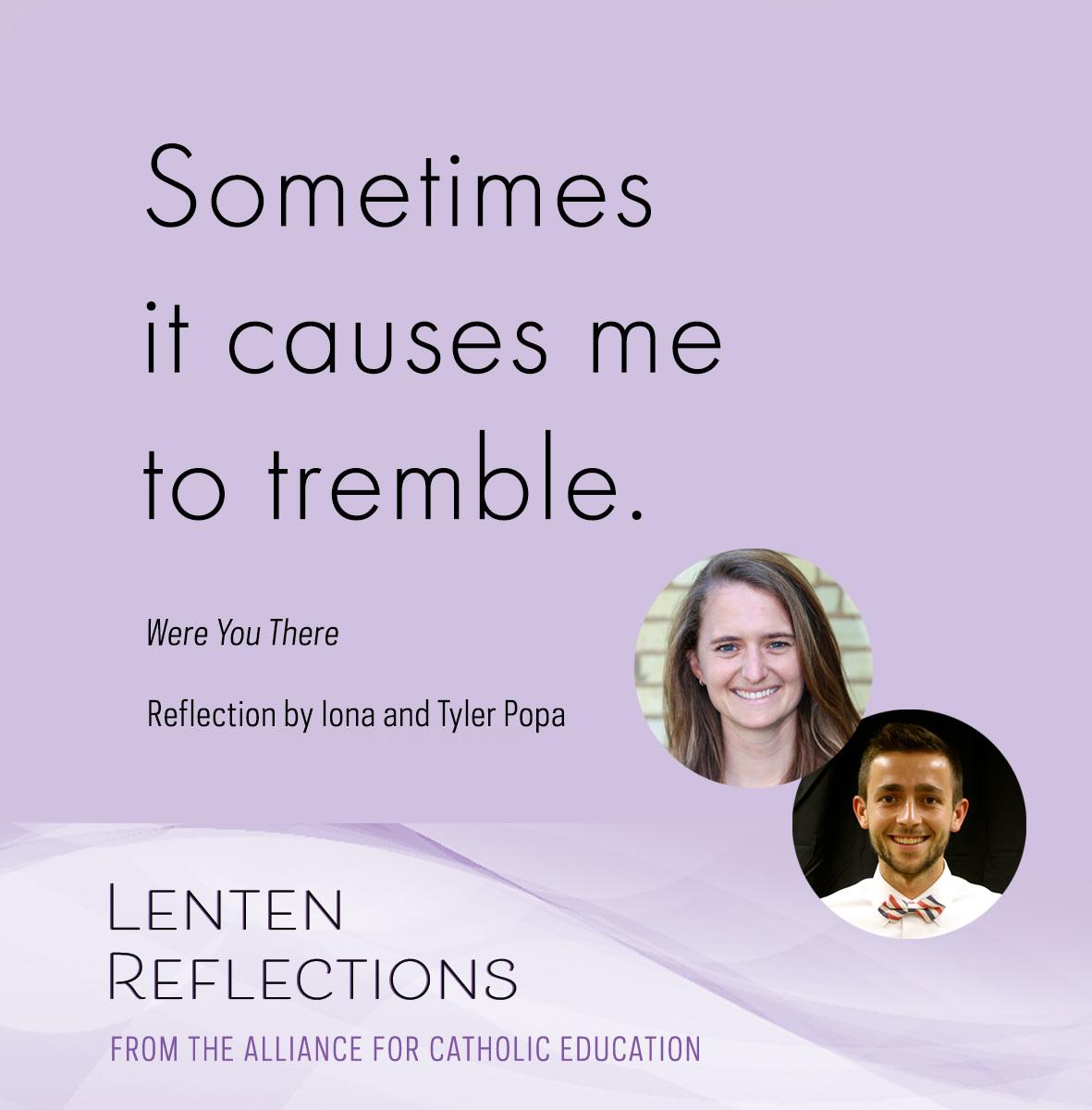Were You There verses 3 and 4
Were you there when they pierced him in the side?
Were you there when they pierced him in the side?
Oh! Sometimes it causes me to tremble, tremble, tremble.
Were you there when they pierced him in the side?
Were you there when the sun refused to shine?
Were you there when the sun refused to shine?
Oh! Sometimes it causes me to tremble, tremble, tremble.
Were you there when the sun refused to shine?
We both have powerful memories of this hymn. Specifically, we remember sitting in pews as children, having visceral reactions to its haunting retelling of the Passion–verse after slow, mournful verse–long before we were capable of grasping the magnitude of the crucifixion. A music major might be able to explain why, but it was one of those Church songs that could transport even a fidgety second grader into a personal moment of sad stillness: an unbidden moment of trembling.
In this respect, it is particularly well-suited to the Lenten season. During Lent, we are invited to meditate on the suffering of our Lord and to join Mary at the foot of the Cross. For a true believer, how could the sincere practice of gazing upon Christ crucified occasion anything other than a moment of trembling?
But that is not enough.
The original spiritual is widely believed to have been sung by enslaved people, not just in response to the crucifixion of Jesus, but also as a lamentation about their own suffering in 19th-century America. We too are called to look beyond Calvary. Jesus reminds us in the Gospel of Matthew that Christ is also present elsewhere: in the naked, the hungry, the thirsty, the sick, the imprisoned, and the unwelcome strangers. As Dorothy Day wrote, “Christ is always with us, always asking for room in our hearts, but now it is with the voice of our contemporaries that He speaks, with the eyes of store clerks, factory workers and children that He gazes; with the hands of office workers, slum dwellers and suburban housewives that He gives. It is with the feet of soldiers and tramps that He walks, and with the heart of anyone in need that He longs for shelter.” Does this kind of suffering also cause us to tremble? As this Lenten hymn asks, are we there?
In his commencement address to Notre Dame graduates in 2017, Fr. Greg Boyle, S.J., quoted Dr. Martin Luther King, Jr.'s statement about church: “It’s not the place you’ve come to, it’s the place you go from.” Indeed, at the end of every Mass, we are charged with the responsibility to go forth and proclaim the Gospel with our lives. Our encounter with Christ in the Eucharist is our invitation to then meet Him in the world. In this sense, when the hymn asks “Were you there?” our response could and should be, “Yes.” Like those who had the courage to stand trembling at the foot of the Cross, we are called to stand trembling with those who are suffering in our world, even as we ourselves may be suffering.
Trembling can be debilitating, so it may seem like an odd place to begin in response to a call to action. But then again, at first glance the Cross seems like an odd place to find life. This Christian paradox, embraced by the Congregation of Holy Cross in their motto: Ave Crux Spes Unica, or “The Cross, Our Only Hope,” is the lifeblood of our faith. Proximity to the Cross, which causes us to tremble, paradoxically also becomes the impetus for action.
Where are we being called to stand, and with whom? Who among us is thirsting? Who is hungry, in body or spirit? Who is imprisoned? Who carries the burden of sickness? Who is naked or exposed? Where are the strangers in need of welcome?
John Paul II writes powerfully about the necessity of solidarity, which he calls “the distinguishing mark of Christ’s disciples,” by which “our neighbor becomes the living image of God.” This Lent, let us all find Christ, not just in contemplation of His sacrifice, but also in solidarity with His brothers and sisters. And even as we are fortified by the knowledge that Christ came to alleviate the suffering of all, let us be trembling.
 Alliance for Catholic Education
Alliance for Catholic Education
